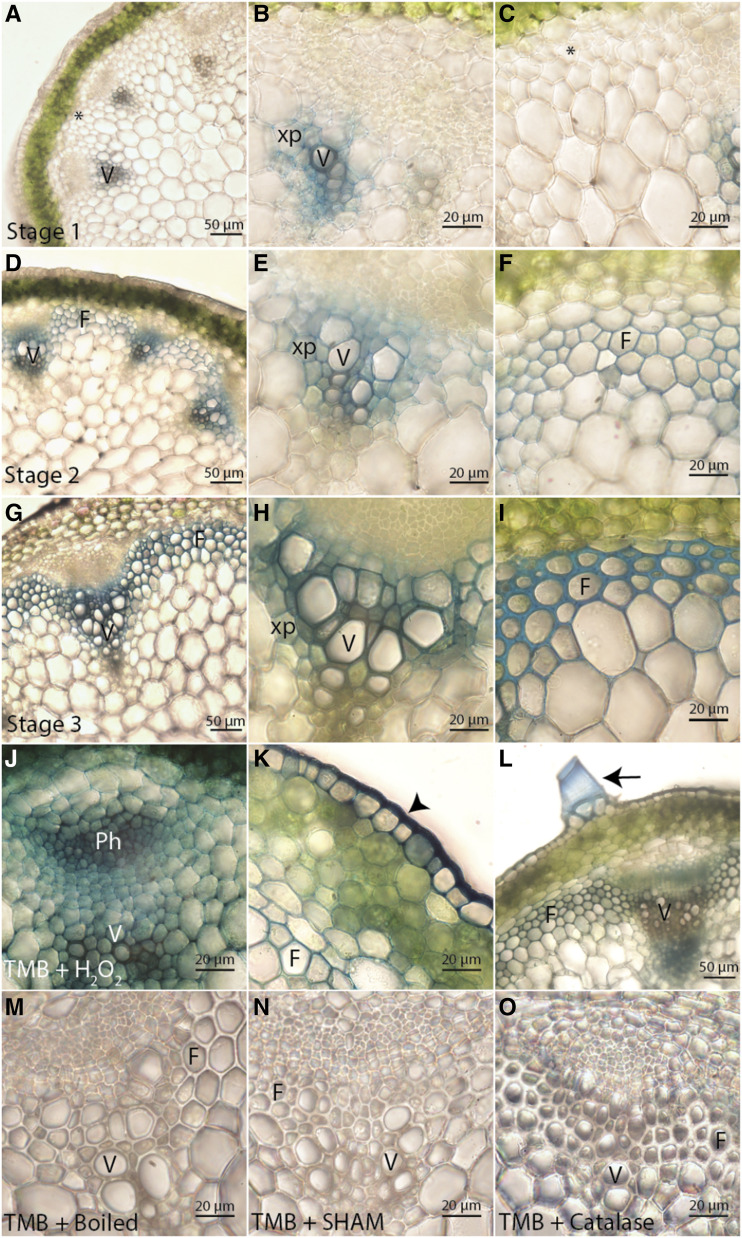Figure 7.
PRXs are ubiquitous in cell walls but only show oxidative activity in lignifying regions during stem development. PRX oxidation of TMB results in a blue precipitate in Col-0 stems. F, Fibers; Ph, phloem; V, xylem vessel elements; xp, xylem parenchyma. Asterisks indicate cells that will differentiate into interfascicular fibers, arrowheads indicate epidermis, and arrows indicate trichome. A to I, PRX enzymatic activity localizes specifically to regions of lignin deposition in stage 1 (A–C), stage 2 (D–F), and stage 3 (G–I) of stem development. J to L, Addition of H2O2 causes TMB oxidation in cell walls of both lignifying and non-lignifying cell types, including xylem and phloem cells (J); fibers, cortex, and epidermal cells (K); and trichomes (L). M to O, Control experiments demonstrate TMB oxidation can be inhibited by boiling (M), treating with the PRX inhibitor SHAM (N), and scavenging H2O2 with catalase (O).

